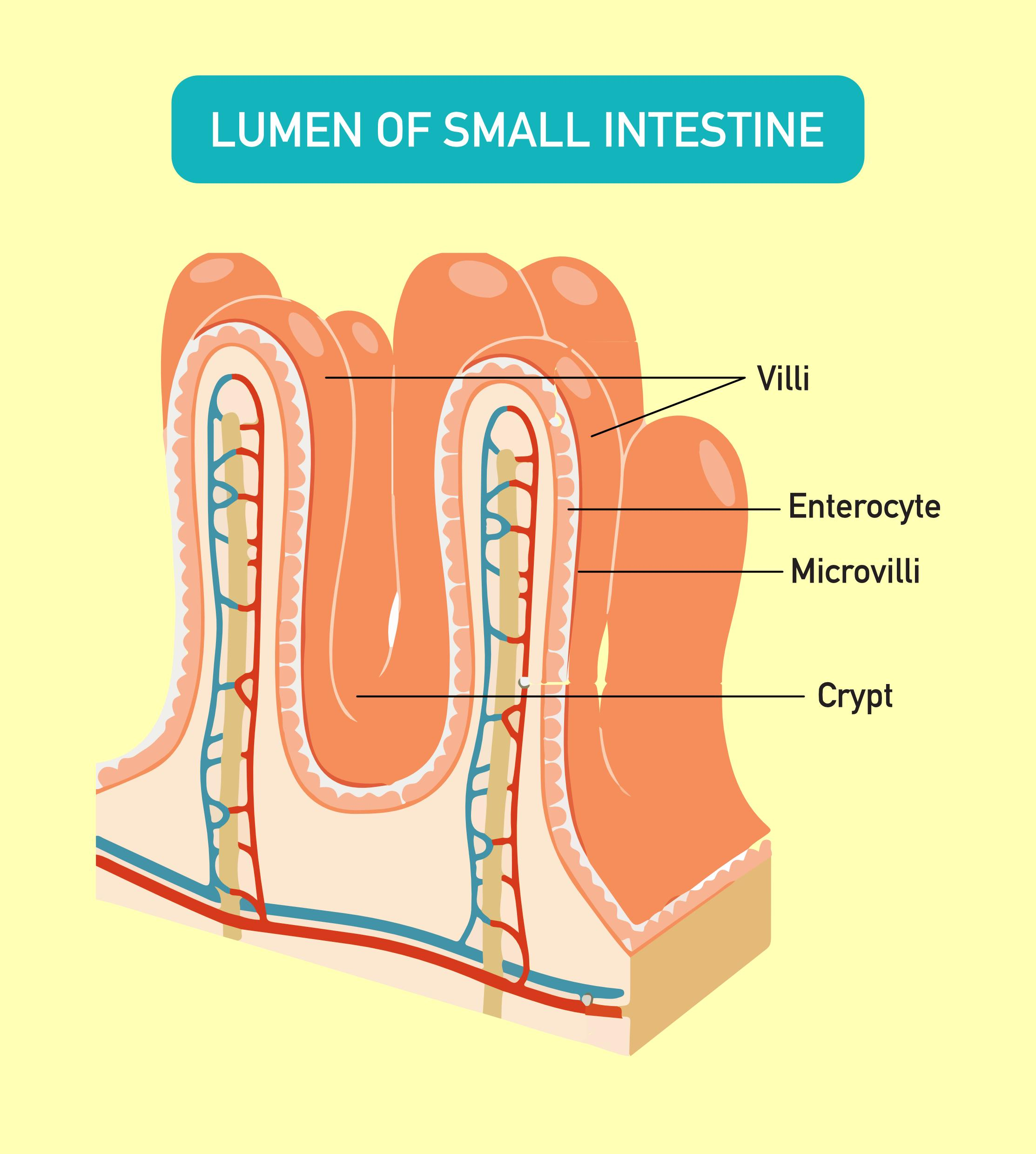
The location of the villi is:
(a)Large intestine
(b)Small intestine
(c)Stomach
(d)None of the above
Answer
463.2k+ views
Hint: In the gastrointestinal tract, villi is present in an organ where much of the final absorption of nutrients and minerals from food occurs. To assist with digestion, it absorbs bile and pancreatic juice through the pancreatic duct.
Complete answer:
Villi are tiny finger-like projections that are found in the small intestinal walls. Their function is to increase the area of the surface in order to optimize digested food absorption. The number of villi varies from 10 to 40 per square meter of tissue and is usually 0.5 to 1 mm long.
The protein molecules are absorbed by these projections and help to transfer the proteins to all cells and tissues.
Within these villi, several blood vessels are present, helping to absorb digested food and bring it to the bloodstream. Later, the ingested food is distributed to each and every cell of the body from the bloodstream. It is called assimilation.
Additional Information: Every villus has a muscle strand that allows contracting and expanding the villi. This is so that the contents are continuously traveling in the lumen of the small intestine and the concentration gradient is preserved for successful absorption.
A mucosal epithelium is protected by the villi, which consists primarily of various cell types, enterocytes, goblet cells, enteroendocrine cells, and paneth cells and stem cells at the base of the villi (also called a crypt). Substances including water and electrolytes are absorbed by enterocytes. Some cells, such as goblet cells, secrete mucus into the bowel cavity and hormones are secreted by enteroendocrine cells. The cells of Paneth secrete antimicrobial peptides.
So, the correct answer is, ‘Small intestine’.
Note: Millions of tiny finger-like projections called villi are in the small intestine. For more effective food absorption, these villi improve the surface region.
There are thousands of finger-like outgrowths on the internal walls of the small intestine. These are called (singular villus) villi.
Each villus is composed of arteries, veins, a complex capillary system, and lacteal, a lymphatic vessel. The lacteal absorbs and transports fatty acids and glycerol away from the villus. In the villi, the capillaries have several functions, carrying the absorbed nutrients such as proteins and carbohydrates away from the villi, but also delivering oxygen to the microvilli so that cell respiration can be performed.

Complete answer:
Villi are tiny finger-like projections that are found in the small intestinal walls. Their function is to increase the area of the surface in order to optimize digested food absorption. The number of villi varies from 10 to 40 per square meter of tissue and is usually 0.5 to 1 mm long.
The protein molecules are absorbed by these projections and help to transfer the proteins to all cells and tissues.
Within these villi, several blood vessels are present, helping to absorb digested food and bring it to the bloodstream. Later, the ingested food is distributed to each and every cell of the body from the bloodstream. It is called assimilation.
Additional Information: Every villus has a muscle strand that allows contracting and expanding the villi. This is so that the contents are continuously traveling in the lumen of the small intestine and the concentration gradient is preserved for successful absorption.
A mucosal epithelium is protected by the villi, which consists primarily of various cell types, enterocytes, goblet cells, enteroendocrine cells, and paneth cells and stem cells at the base of the villi (also called a crypt). Substances including water and electrolytes are absorbed by enterocytes. Some cells, such as goblet cells, secrete mucus into the bowel cavity and hormones are secreted by enteroendocrine cells. The cells of Paneth secrete antimicrobial peptides.
So, the correct answer is, ‘Small intestine’.
Note: Millions of tiny finger-like projections called villi are in the small intestine. For more effective food absorption, these villi improve the surface region.
There are thousands of finger-like outgrowths on the internal walls of the small intestine. These are called (singular villus) villi.
Each villus is composed of arteries, veins, a complex capillary system, and lacteal, a lymphatic vessel. The lacteal absorbs and transports fatty acids and glycerol away from the villus. In the villi, the capillaries have several functions, carrying the absorbed nutrients such as proteins and carbohydrates away from the villi, but also delivering oxygen to the microvilli so that cell respiration can be performed.

Recently Updated Pages
One difference between a Formal Letter and an informal class null english null

Can anyone list 10 advantages and disadvantages of friction

What are the Components of Financial System?

How do you arrange NH4 + BF3 H2O C2H2 in increasing class 11 chemistry CBSE

Is H mCT and q mCT the same thing If so which is more class 11 chemistry CBSE

What are the possible quantum number for the last outermost class 11 chemistry CBSE

Trending doubts
The reservoir of dam is called Govind Sagar A Jayakwadi class 11 social science CBSE

10 examples of friction in our daily life

Difference Between Prokaryotic Cells and Eukaryotic Cells

State and prove Bernoullis theorem class 11 physics CBSE

State the laws of reflection of light

What is the chemical name of Iron class 11 chemistry CBSE




